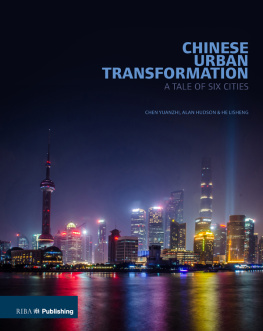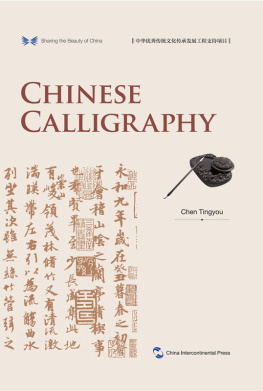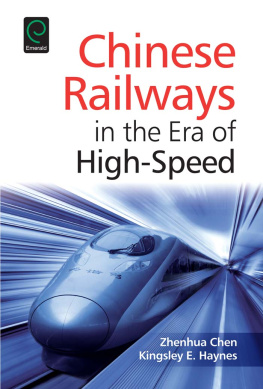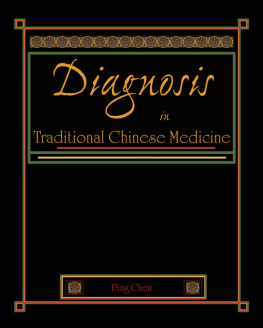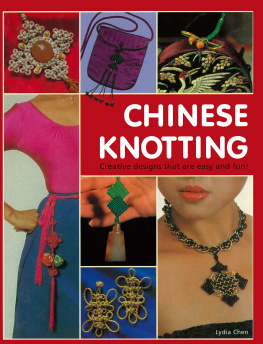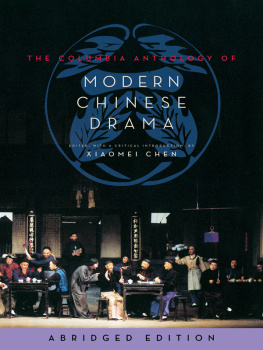Chen Yuanzhi - Chinese Urban Transformation
Here you can read online Chen Yuanzhi - Chinese Urban Transformation full text of the book (entire story) in english for free. Download pdf and epub, get meaning, cover and reviews about this ebook. year: 2019, publisher: RIBA Publishing, genre: Politics. Description of the work, (preface) as well as reviews are available. Best literature library LitArk.com created for fans of good reading and offers a wide selection of genres:
Romance novel
Science fiction
Adventure
Detective
Science
History
Home and family
Prose
Art
Politics
Computer
Non-fiction
Religion
Business
Children
Humor
Choose a favorite category and find really read worthwhile books. Enjoy immersion in the world of imagination, feel the emotions of the characters or learn something new for yourself, make an fascinating discovery.
- Book:Chinese Urban Transformation
- Author:
- Publisher:RIBA Publishing
- Genre:
- Year:2019
- Rating:3 / 5
- Favourites:Add to favourites
- Your mark:
- 60
- 1
- 2
- 3
- 4
- 5
Chinese Urban Transformation: summary, description and annotation
We offer to read an annotation, description, summary or preface (depends on what the author of the book "Chinese Urban Transformation" wrote himself). If you haven't found the necessary information about the book — write in the comments, we will try to find it.
Chinese Urban Transformation — read online for free the complete book (whole text) full work
Below is the text of the book, divided by pages. System saving the place of the last page read, allows you to conveniently read the book "Chinese Urban Transformation" online for free, without having to search again every time where you left off. Put a bookmark, and you can go to the page where you finished reading at any time.
Font size:
Interval:
Bookmark:
This book is the product of the Oxford UniversityCELAP Joint Centre for Urban Studies and is supported by the Chinese Fund for the Humanities and Social Sciences. Associate Professor Chen Yuanzhi, Professor Alan Hudson and Professor He Lisheng were the joint project leaders, working out the books overall structure and the topic for each chapter.
Team members include:
- Deputy General Director Liu Genfa, Professor Zhu
- Ruibo, Professor Chu Tianjiao, Deputy Director
- Ding Jinfeng, Austin Williams, Dr Yang Zhiqiang, and Associate Professor Ge Yixiang. The authors of the first drafts of each chapter are as follows:
- Preface (Alan Hudson, Chen Yuanzhi)
- (He Lisheng, Chu Tianjiao)
- (Chu Tianjiao)
- (Liu Genfa, Chu Tianjiao)
- (Ding Jinfeng, Chu Tianjiao)
- (Austin Williams)
- (He Lisheng, Chen Yuanzhi, Zhu Ruibo)
- (Alan Hudson, Chen Yuanzhi)
- (Yang Zhiqiang)
- (Zhu Ruibo, Yang Zhiqiang)
- (Chu Tianjiao)
- (Chen Yuanzhi)
- (Chen Yuanzhi)
- Conclusion (Chen Yuanzhi, Alan Hudson).
Chen Yuanzhi and Alan Hudson revised the whole book on the basis of the first drafts. They also adapted and improved the translated version of the book. Chen Yuanzhi undertook the task of obtaining the copyright of all the photos used in the book.
The project received substantial help from the following organisations: Shanghai Academy of Social Sciences, Nanchang Organization Department of CPC Committee, Qingdao Organization Department CPC Committee, Hangzhou International City Research Center, Chengdu Organization Department of CPC Committee, and Hefei Municipal Government. These organisations helped to arrange the field study agendas, provided case study materials and contributed their thoughts regarding city development. Thank you to all of them. The present book has benefited enormously from the hard work and professionalism of our editorial team at RIBA Publishing. In particular, we would like to acknowledge the contributions of our Commissioning Editor, Alex White.
Dr Chen Yuanzhi, Associate Professor at the Department of Academics, CELAP
Alan Hudson, Director of Programmes in Leadership and Public Policy, Oxford University Department for Continuing Education
Dr He Lisheng, Director of the Teaching Affairs Department, CELAP
The Process and Orientation of Chinas Urbanisation
Urbanisation follows inexorably from economic development and successful urbanisation is a prerequisite for both further economic development and social and environmental well-being. Chinas urbanisation in the period following the foundation of the Peoples Republic in 1949 was closely associated with the single index of industrial development. China became more urban but relatively slowly and with little diversification in the economy. The pace of urbanisation and a new and broader understanding of what it means to shape a new urban environment have followed from the economic reforms initiated in the late 1970s. In the last few years the shift in policy and urban thinking has gained pace, making Chinas urban experience crucial not only in terms of quantity there are many people but also in quality through urban study and policy implementation.
With a large population of around 1.3 billion, Chinas urbanisation trajectory will exert tremendous influence not only upon its own development but also on the world. Chinas urbanisation process is of particular importance because of its speed and scale. It took six decades for Chinas urbanisation to expand from 10 per cent to 50 per cent. The same process took 150 years in Europe and 210 years in Latin America and the Caribbean (China National Human Development Report, 2013). The urbanisation development path and the experience of urbanisation in China are exemplars especially for the many countries throughout the South with the same opportunities for urban development that have been demonstrated in China. This chapter describes the development process and present state of Chinas urbanisation. It examines future policies and possibilities for the healthy development of Chinas urbanisation.
Urbanisation here means the shift from an agricultural population to a non-agricultural population and the centralisation of resources for production and livelihood. Since the population of China constitutes one-quarter of the total population of the developing countries in the world, its urbanisation cannot help but be highly influential. Between 1975 and 2000, the urban population of the world increased by 1.317 billion, with a yearly increase of 52.68 million. The urban population of the developing countries increased by 1.164 billion, with a yearly increase of 46.52 million by far the biggest component of the historic shift to urban life. In China itself from 1978 to 2003, the urban population increased by 351.5 million, with a yearly increase of 14.05 million. This accounted for 26.7 per cent of the global yearly urban population increase, and 30.2 per cent of that in the developing countries. In the near future, the healthy development of Chinas urbanisation has to contribute to solving a series of Chinas major strategic problems. In doing so, Chinas urbanisation will be of historic significance to the world.
Since the founding of the Peoples Republic of China (PRC) in 1949, Chinas urbanisation has been a function of the planned economy period and then the market economy period. shows Chinas urbanisation rate from 1949 to 2012.
In the early years of New China, the government implemented a strategy of prioritising the development of heavy industries. Under this strategy, a large amount of rural labour entered state-owned enterprises to work, and industrial cities particularly the inland industrial cities had priority and developed quickly. During this period, the proportional increase in the urban population exceeded that of national population as a whole:
- From 1952 to 1965, the national urban population increased from 71.63 million to 130.45 million, an increase of 82.1 per cent.
- During the same period, the national population increased from 574.82 million to 725.38 million, an increase of 26.2 per cent.
- The percentage of the urban population in the national population increased from 12.5 per cent in 1952 to 16.3 per cent in 1958, and then to 18.0 per cent in 1965.
Chinas planning has been organised around successive Five-Year Plans since 1953. Large-scale industrialisation turned a large number of peasants into workers. The year-on-year increase in the urban population between 1949 and 1958 was 0.63 per cent. Under the planned economy this rural labour flowed into urban areas through controlled channels such as employment, army enrolment, and university/college enrolment.

From 1958 to 1965, China experienced dramatic fluctuations. From 1958 to the first half of 1960,the Chinese government initiated the giant leap, described as a socialist development campaign for industry and agriculture. The aim was to drive forward industrialisation using Chinas abundant labour resources and an atmosphere of revolutionary zeal to enable China to surpass other nations. In this context, 30 million peasants migrated into urban areas and the national urbanisation rate increased by 1.45 per cent each year. The rapid urban shift led to crop failure, a serious shortage in the urban food supply, and famine. Twenty-six million people returned to rural areas between 1963 and 1965 and urbanisation stalled.
Font size:
Interval:
Bookmark:
Similar books «Chinese Urban Transformation»
Look at similar books to Chinese Urban Transformation. We have selected literature similar in name and meaning in the hope of providing readers with more options to find new, interesting, not yet read works.
Discussion, reviews of the book Chinese Urban Transformation and just readers' own opinions. Leave your comments, write what you think about the work, its meaning or the main characters. Specify what exactly you liked and what you didn't like, and why you think so.

